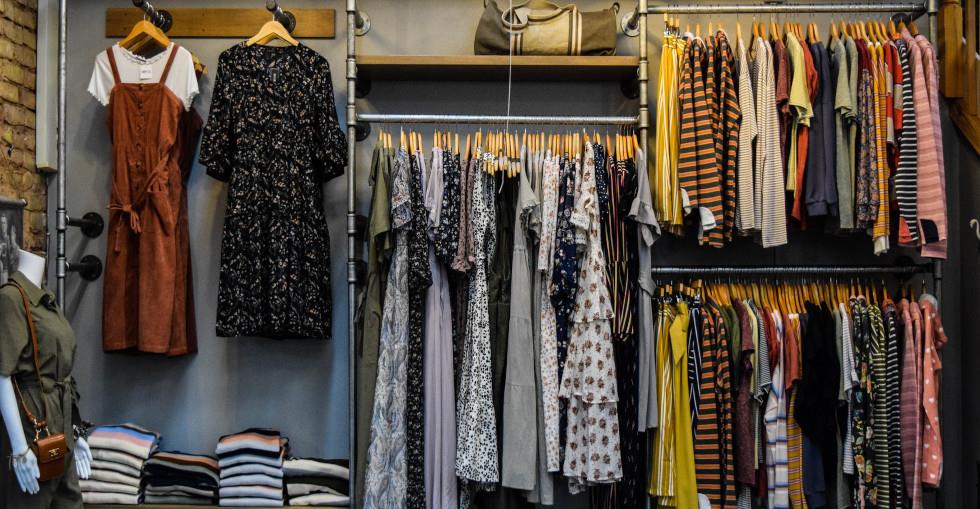Now that your clothing business is up and running, you’ll need to overcome some challenges.
With constantly changing trends, styles, and patterns you can easily adapt to the new tastes. But running a business successfully requires more than just your vision and unique creations. You need to not only manage the company but also plan for its growth. Clothing businesses are always in demand, and if you focus on growing it and maximising its profitability according to consumer trends, purchasers will notice you when it comes time to sell it.
Strategies to improve your business
Online shopping is the future – take it seriously
There are many ways to begin promoting your business. While conventional advertising is one of them, a website, app, or social media account is crucial for the success of the business and to bring in more money.
As of 2020, the UK is currently the third biggest ecommerce market, totaling approximately £73.7 billion ($99 billion). As consumers increasingly shift toward online shopping, business owners will have to creatively reinvent and readapt their business models to stay relevant.
A functional and responsive site is the easiest way to keep up with increasing demands. But the layout, design, logo, and styles are important too. A user-friendly interface is also necessary to guarantee that your customers stay on your website. It should, most importantly, be optimized for mobile use. For example, at present, 73% of UK consumers prefer to shop through a mobile device.
Have the delivery details, product details, and honest reviews in clear fonts. Don't make the user search for simple information.
Look for gaps in the clothing market
You probably already have a customer base at this point, but target audiences constantly shift and change alongside the economy. One of the main factors that result in a downfall for business owners is that they don’t adequately identify their target audience. This is why it’s important that you perform thorough market research.
You can explore a number of paid and free online resources to evaluate different gaps in the UK clothing industry, gradually identifying your key demographic. There are two different market research methodologies:
- Primary market research – this is where you gather market data doing your own research
- Secondary market research – you can buy research and data from companies that have already performed a complete and thorough market analysis
Always be on the hunt for reliable manufacturers
Collaborating with a reliable manufacturer is going to guarantee a consistent manufacturing process. This is why you should never jump the gun with just any manufacturer. Thoroughly explore different options, weigh the pros and cons, vet every potential manufacturer, and make a more informed decision. Here are some ways you can do that:
- Decide if you want to go with a local manufacturer or an overseas company.
- Going with a foreign manufacturer can help save money, but it can come with other problems such as late deliveries, inadequate quality, defects, wrong specifications, etc.
- Sqetch is a reliable online source you can use to find the right manufacturer – the online marketplace has a reliable and select number of whole distributors and manufacturers you can connect with.
Accelerate your online presence
If you don’t have a website, it is imperative to build one. The alternative is hiring a web design agency or an independent web designer - if you can afford it. Fortunately, there are a plethora of free website building resources and platforms you can use to keep things under your budget.
Some of the best free web design platforms include:
- Weebly
- Wix
- Webs
- SiteBuilder
Marketing your brand is integral
Marketing is a critical aspect of growing your business, especially online. To sell your products, your target audience needs to know your brand exists. Marketing should always come before formally launching your clothing line. One of the best ways to start your marketing campaign is through Facebook Ads.
This is a mainstream advertising tool popular in both small and big businesses and can be especially effective for clothing businesses to steadily accumulate their target demographic. There’s no doubt that Facebook has powerful targeting features – helping you get to your customers faster.
And if you’re running a bit low on ad budget, then no worries, you can start with organic marketing campaigns on different social media networks.
You can create relevant and sentiment-building content that can truly resonate with your target audience. You can also leverage the power of influencer marketing. You can do this by offering free items to popular social media influencers and in return get credible and authentic shout outs from them on their respective social media accounts.
Revisit the price of your products
To choose viable price points for your products, you are going to need to learn how much it costs you to manufacture your products. In accounting terms, this is known as COGS (cost of goods sold). There are a variety of different factors that go into COGS such as the cost of labour, the cost of materials, production costs, etc.
In addition, you’ll also have to maintain a spreadsheet for all your overhead and additional costs such as warehouse rent, payroll, logistics, etc. It’s a bit extensive, but easy to learn and understand. And once you know what your total COGS are, you’ll be able to choose a price that helps make you some profit along with covering all these expenses.
Collaborations and investment opportunities
After you’ve gained some measure of prominence based on the feedback and your sales funnel, it’s now time to start looking for ripe investment opportunities to start and gradually grow your business. Form collaborations or partnerships with existing clothing companies that also sell their products to your customer-base. Pitch your brand to them.
Similarly, work on your business plan and write down a well-articulated and clear proposal for potential investors. Mention why you need the money, how much money you need, the potential of your brand, and how the investors will benefit from your company.
Create an exit strategy - always plan to sell your business
It’s always helpful to have an exit strategy in place should you decide to sell your business in the future. For example, there may come a point when you simply can’t produce more designs or won’t be able to keep up with relevant products that will sell.
If you want to exit, here’s what you should do:
- Write down all the reasons why you want to sell the business and mention an exit date.
- In terms of your valuation, it’s important to analyse your business’s strengths and how you can reduce or possibly eliminate risks to consistently increase its current value to the day when you exit.
- Consult with financial experts and accountants to create a business due diligence report. You need to organize everything from your back-office systems to your taxes and books.
- When negotiating your business, you need to structure your exit deal. Think about how the deal can impact your tax liabilities while also benefiting the potential buyer.



